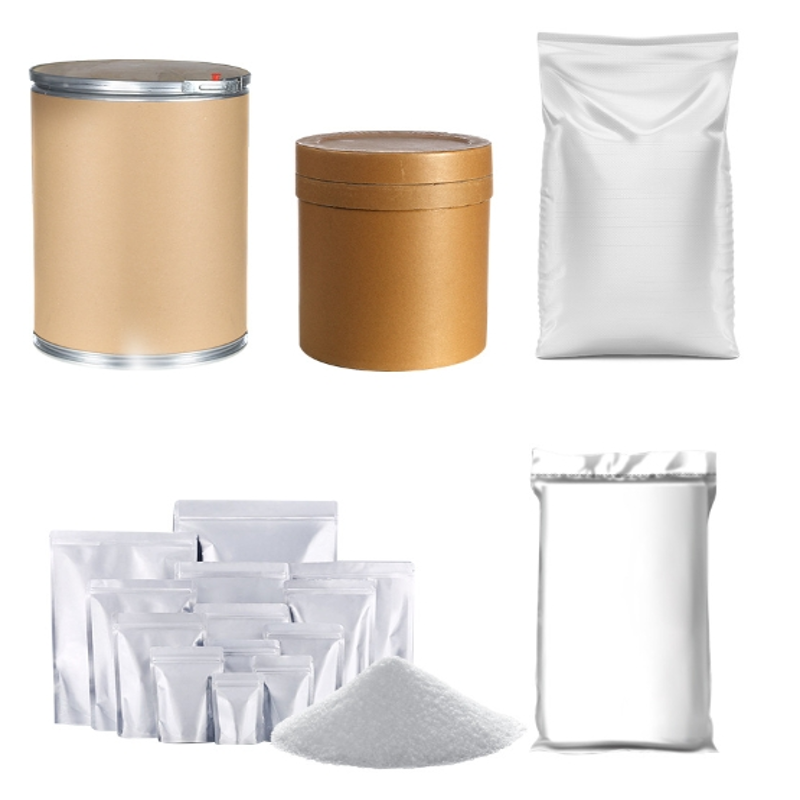-
Categories
-
Pharmaceutical Intermediates
-
Active Pharmaceutical Ingredients
-
Food Additives
- Industrial Coatings
- Agrochemicals
- Dyes and Pigments
- Surfactant
- Flavors and Fragrances
- Chemical Reagents
- Catalyst and Auxiliary
- Natural Products
- Inorganic Chemistry
-
Organic Chemistry
-
Biochemical Engineering
- Analytical Chemistry
- Cosmetic Ingredient
-
Pharmaceutical Intermediates
Promotion
ECHEMI Mall
Wholesale
Weekly Price
Exhibition
News
-
Trade Service
The 2022 American Society of Clinical Oncology Symposium on Genitourinary Oncology (ASCO GU 2022) will be held in San Francisco on February 17-19, local time
.
In the field of penile cancer, the results of the PERICLES study were announced, observing the antitumor activity of atezolizumab in patients with advanced penile squamous cell carcinoma
.
Background: Patients with advanced penile squamous cell carcinoma (aPeCa) have a high incidence and poor prognosis (2-year overall survival rate of 21%) due to local disease progression
.
Preclinical studies have shown that the presence of infiltrating immune cells and high PD-L1 expression suggest that these patients may benefit from immunotherapy
.
The PERICLES study was designed to evaluate the efficacy of atezolizumab (atezo) with or without radiotherapy (RT) in the control of penile cancer with local lymph node metastasis in aPeCa patients
.
Methods: This study was a single-center, two-arm (non-randomized), phase II clinical trial (NCT03686332) of 32 patients with WHO PS 0-1 and histologically confirmed aPeCa
.
Patients were allowed to receive any prior treatment except immunotherapy
.
The study is mainly divided into two treatment cohorts, patients in cohort A and B received atezo 1200mg (q3W) treatment
.
Patients in cohort A (those expected to benefit from radiotherapy) received 33 simultaneous doses of 1.
5 Gy (regional lymph nodes and penile area) and 1.
8 Gy (macroscopic tumor + margins)
.
Patients underwent abdominal and chest CT examinations every 12 weeks, and the efficacy was assessed according to RECIST1.
1 criteria
.
Toxicity was assessed using the NCI-CTCAE V4 score
.
The primary endpoint of the study was the 1-year progression-free survival (PFS) rate for the entire cohort
.
Results: From October 2018 to August 2021, 20 patients were enrolled in cohort A (RT+atezo) and 12 patients in cohort B (atezo only)
.
The median follow-up time was 22 months (IQR 4.
3-14)
.
The median age was 67 years (IQR 60-72 years)
.
All patients were stage IV aPeCa
.
Patients were previously treatment-naïve (25%), or had prior RT (34%), chemoradiotherapy (22%), chemotherapy (6%), or surgery (69%)
.
Grade 3-4 adverse events (AEs) related to immunotherapy or radiotherapy occurred in 3 of 32 patients (9.
4%) in both cohorts; 1 of 20 patients in cohort A (5.
0%) experienced 3 -Level 4 AE
.
No grade 5 treatment-related AEs occurred
.
The 1-year PFS rate was 12% (95% CI 4.
0-33), which did not meet the primary study endpoint
.
According to RECIST1.
1 assessment, the best response rate in patients was 33% (see table)
.
Two patients in cohort A and one patient in cohort B achieved complete remission
.
Early progression after initial remission occurred in 5 patients
.
The median overall survival (OS) was 12 months (95% CI 5.
4-19)
.
CONCLUSIONS: Antitumor activity of atezolizumab, including complete and durable responses, was observed in patients with aPeCa, although the study did not meet the primary study endpoint (PFS).
.
Professor Hielke Martijn de Vries also raised some questions in his report: The study did not observe the synergistic effect of radiotherapy and immunotherapy.
Are there other radiotherapy options to improve the effect? In the study, it was observed that some patients did not respond to immunotherapy at all or developed early resistance, and tumor tissue needs to be further collected for marker analysis, including the evaluation and follow-up of hrHPV, PD-L1 and other markers; he also said that combined systemic therapy may resistance can be overcome
.
Reference: Hielke Martijn de Vries, Jeantine De Feijter, Elise Bekers, et al.
Clinical results of PERICLES: A phase II trial investigating atezolizumab +/- radiotherapy for advanced squamous cell carcinoma of the penis.
[J] J Clin Oncol 40, 2022 (suppl 6; abstr 3)
.
In the field of penile cancer, the results of the PERICLES study were announced, observing the antitumor activity of atezolizumab in patients with advanced penile squamous cell carcinoma
.
Background: Patients with advanced penile squamous cell carcinoma (aPeCa) have a high incidence and poor prognosis (2-year overall survival rate of 21%) due to local disease progression
.
Preclinical studies have shown that the presence of infiltrating immune cells and high PD-L1 expression suggest that these patients may benefit from immunotherapy
.
The PERICLES study was designed to evaluate the efficacy of atezolizumab (atezo) with or without radiotherapy (RT) in the control of penile cancer with local lymph node metastasis in aPeCa patients
.
Methods: This study was a single-center, two-arm (non-randomized), phase II clinical trial (NCT03686332) of 32 patients with WHO PS 0-1 and histologically confirmed aPeCa
.
Patients were allowed to receive any prior treatment except immunotherapy
.
The study is mainly divided into two treatment cohorts, patients in cohort A and B received atezo 1200mg (q3W) treatment
.
Patients in cohort A (those expected to benefit from radiotherapy) received 33 simultaneous doses of 1.
5 Gy (regional lymph nodes and penile area) and 1.
8 Gy (macroscopic tumor + margins)
.
Patients underwent abdominal and chest CT examinations every 12 weeks, and the efficacy was assessed according to RECIST1.
1 criteria
.
Toxicity was assessed using the NCI-CTCAE V4 score
.
The primary endpoint of the study was the 1-year progression-free survival (PFS) rate for the entire cohort
.
Results: From October 2018 to August 2021, 20 patients were enrolled in cohort A (RT+atezo) and 12 patients in cohort B (atezo only)
.
The median follow-up time was 22 months (IQR 4.
3-14)
.
The median age was 67 years (IQR 60-72 years)
.
All patients were stage IV aPeCa
.
Patients were previously treatment-naïve (25%), or had prior RT (34%), chemoradiotherapy (22%), chemotherapy (6%), or surgery (69%)
.
Grade 3-4 adverse events (AEs) related to immunotherapy or radiotherapy occurred in 3 of 32 patients (9.
4%) in both cohorts; 1 of 20 patients in cohort A (5.
0%) experienced 3 -Level 4 AE
.
No grade 5 treatment-related AEs occurred
.
The 1-year PFS rate was 12% (95% CI 4.
0-33), which did not meet the primary study endpoint
.
According to RECIST1.
1 assessment, the best response rate in patients was 33% (see table)
.
Two patients in cohort A and one patient in cohort B achieved complete remission
.
Early progression after initial remission occurred in 5 patients
.
The median overall survival (OS) was 12 months (95% CI 5.
4-19)
.
CONCLUSIONS: Antitumor activity of atezolizumab, including complete and durable responses, was observed in patients with aPeCa, although the study did not meet the primary study endpoint (PFS).
.
Professor Hielke Martijn de Vries also raised some questions in his report: The study did not observe the synergistic effect of radiotherapy and immunotherapy.
Are there other radiotherapy options to improve the effect? In the study, it was observed that some patients did not respond to immunotherapy at all or developed early resistance, and tumor tissue needs to be further collected for marker analysis, including the evaluation and follow-up of hrHPV, PD-L1 and other markers; he also said that combined systemic therapy may resistance can be overcome
.
Reference: Hielke Martijn de Vries, Jeantine De Feijter, Elise Bekers, et al.
Clinical results of PERICLES: A phase II trial investigating atezolizumab +/- radiotherapy for advanced squamous cell carcinoma of the penis.
[J] J Clin Oncol 40, 2022 (suppl 6; abstr 3)







